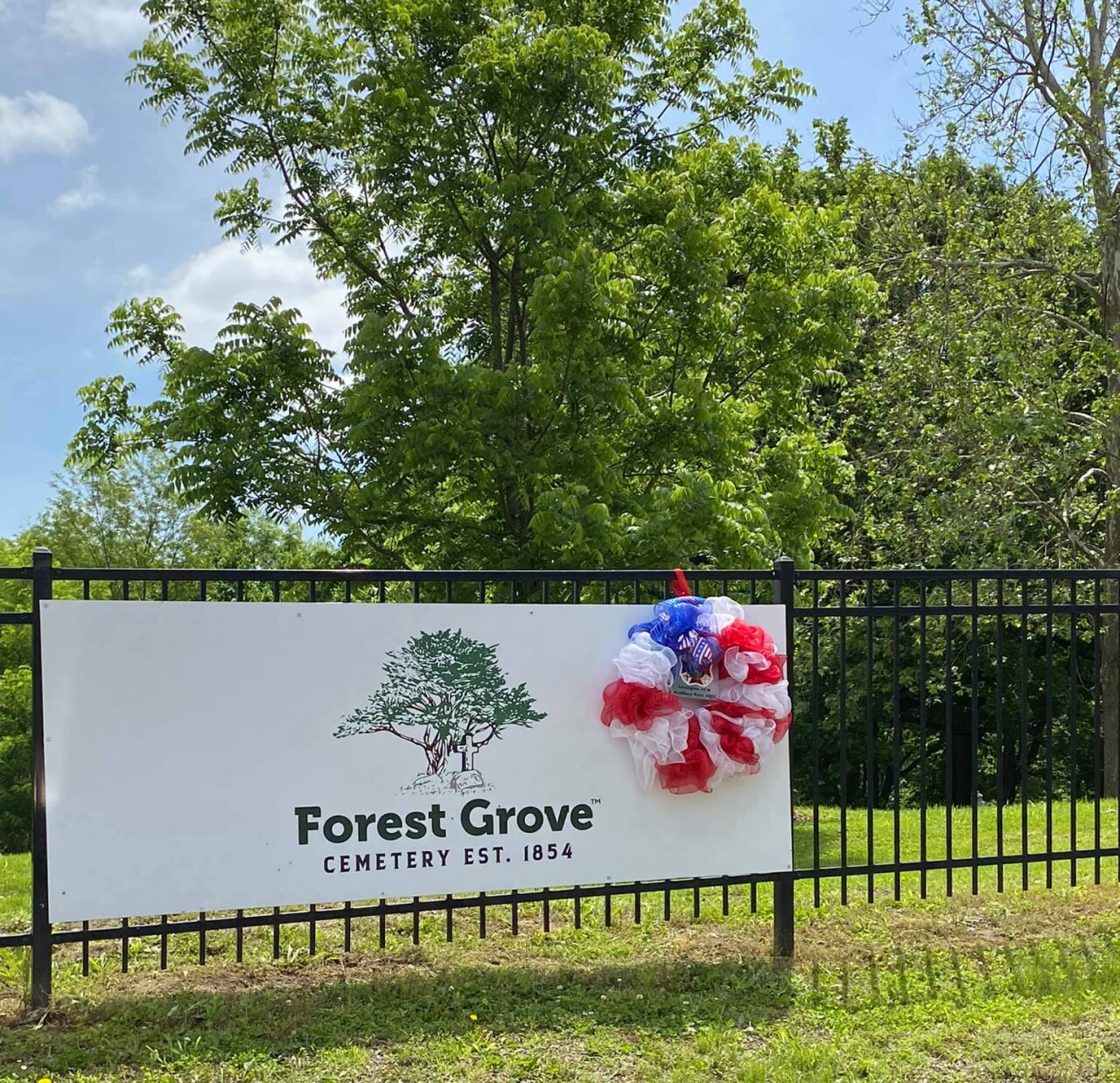KANSAS CITY, Mo. — Dozens of volunteers will gather Saturday morning to help spruce up Forest Grove Cemetery in Lexington, Missouri.
The cemetery, which was deeded to the town’s Black community in 1890, was established prior to the Civil War in 1854 for slave burials.
“Lexington had a huge slave population — in fact, one of the largest in the state,” said Judy Lindquist, the founder and president of the nonprofit Forest Grove Cemetery Project. “(It was) not just the plantations around town, but in town there are still homes where you can see where the slave quarters were.”

According to Lindquist, four predominantly Black churches in Lexington took responsibility for the cemetery’s upkeep, but only one of those churches remains today.
“The Second Baptist Church is the only one left, and it’s an elderly population,” Lindquist said. ‘They can’t take care of it anymore.”
The grounds have fallen into disrepair during the last half-century with overgrown brush swallowing up headstones, a mangled fence and vandalism of some headstones.
Lindquist, who now lives in St. Louis but frequented the cemetery to pay respects to friends buried there during trips home, was troubled by the cemetery’s deteriorating conditions.

“I have always, when I come back to Lexington, taken flowers to the graves of friends and people I have known,” Lindquist said. “I graduated from the high school in 1970, so whenever I come back I take flowers out to the cemeteries. Of course, I have friends out at Forest Grove, a former teacher who is a dear man who I love very much.”
She and a friend hatched the idea to fix up Forest Grove roughly six years ago after meeting for lunch.
“We started out just trying to replace the fence about six years ago,” Lindquist said. “We didn’t really have a plan, but one thing kind of led to another. We ended up doing other projects, raising money to keep the grounds maintained.”
The new fence has been installed but more work continues with the goal of fixing up Forest Grove as a proper resting place for those buried there. It's become a passion project for Lindquist and several others in Lexington.
In conjunction with Juneteenth on Saturday, volunteers, including Boy Scout Troop 315 from Raymore, will help clear brush and get the chance to learn about the history of Forest Grove and some of the people buried there from 10 a.m. to 2 p.m.
RELATED | Sign up to volunteer at Saturday’s cleanup
“It’s not just an awareness of the cemetery, but an awareness of what the people who are there dealt with,” Lindquist said. “We have over 350 people who were slaves, probably more than that, because people buried from 1854 to 18-whatever, we have no idea what their names are. We will never know. There are no records for this cemetery.”
She has also written a book, “Forest Grove Cemetery: History, Faces and Stories,” about some of the men and women laid to rest there. Proceeds from the book benefit the Forest Grove Cemetery Project.

Allie Hancock and Elmer Radd are among those buried at Forest Grove.
Hancock was a concert pianist, who toured Canada in 1913 because she was not able to tour the U.S., while Radd’s Cotton Club Band sold out shows across the Midwest.
Three former Negro Leagues baseball players also are buried at the cemetery, including Bill “Lightning” Lindsay.
Lindsay, also known as “The Kansas Cyclone,” pitched two seasons for the Kansas City (Kansas) Giants and went on to star for the Chicago American Giants before his sudden death in 1914 at age 23.
A Sept. 12, 1914, obituary in the Indianapolis Freeman called Lindsay “one of the five greatest baseball pitchers in America.”
The Negro Leagues Baseball Grave Marker Project recently donated a new grave marker for Lindsay after his final resting place was identified in Forest Grove Cemetery.

Lindsay’s brother, fellow former Negro Leagues player Robert “Frog” Lindsay, and William “Ashes” Jackson, who both played for the KC Giants, also are buried at Forest Grove and are expected to receive new grave markers.
Nearly five dozen U.S. military veterans, including seven from the Civil War and many who served in segregated units during World War I, also are buried at Forest Grove.
George “The Professor” Green, who served as the Douglass School in Lexington’s principal for 50 years, also is among those buried at Forest Grove.
“I’m very excited about tomorrow, not just to get the (information about the) cemetery out there, but to promote the history of what the people who are buried there dealt with,” Lindquist said. “Not just the slaves, but the people who were born after the Civil War. There are some amazing people out there.”



